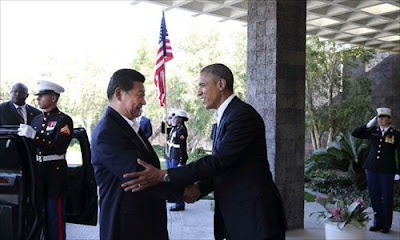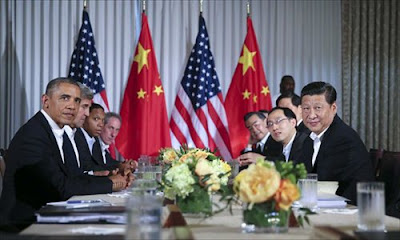LEADERS and managers obviously have one thing in common they lead or manage teams; but as their titles suggest there are differences between leaders and managers.
As an executive search consultant I have interviewed many senior executives over the years and most of them have indicated that they would prefer to be led than to be managed.
However, I have observed that as an organisation grows it is almost impossible to scale up without a strong management structure. As such, I believe that leadership and management both have a part to play in the growth of an organisation.
The manager
My first encounter with a manager was on my first job. I was fresh out of school and had no knowledge of how an office operated let alone how to use the computer which ran the now obsolete Wordstar programme. I was in awe of my manager. She seemed to know where everything was and always spoke confidently regardless of whom she was addressing. She would also set our targets, monitor our progress and discipline us when necessary. If we accept the definition of a manager as one who directs and controls, then I would say that she played her role well but I found that I was doing the job because I had to and not because I wanted to. My manager was not concerned about engagement as long as we met our targets and would not entertain any queries that would challenge the norm. Whilst I didn't feel that she was someone I could confide in, I certainly respected her discipline and commitment to her job.
The leader
We have all come across leaders who have inspired us at some point in our lives. In comparison with the manager I mentioned earlier, the managing director of the same company was someone who was out to change the world. She was absolutely passionate about what she believed in and her passion was infectious. She spoke with such clarity of thought that I never questioned her beliefs and was glad to work weekends and long hours to be a part of something bigger than myself. Suffice to say that she was an inspiring individual who has influenced my professional and personal life even until today.
The difference
Warren Bennis lists the following comparisons between a manager and a leader in “On Becoming a Leader,” which was published in 1989:
- The manager administers; the leader innovates.
- The manager is a copy; the leader is an original. The manager maintains; the leader develops.
- The manager focuses on systems and structure; the leader focuses on people.
- The manager relies on control; the leader inspires trust.
- The manager has a short-range view; the leader has a long-range perspective.
- The manager asks how and when; the leader asks what and why.
- The manager has his or her eye always on the bottom line; the leader's eye is on the horizon.
- The manager imitates; the leader originates.
- The manager accepts the status quo; the leader challenges it.
- The manager is the classic good soldier; the leader is his or her own person.
- The manager does things right; the leader does the right thing.
Given that any kind of change takes time and usually uncomfortable if not painful, I would offer these six areas as the first step in the transition process from manager to leader.
Something bigger than themselves: A leader usually has a cause to champion. A manager who strives to make this transition would have to find something that he or she strongly believes in, in the context of their own organisations or field of expertise. This could include something they feel needs to be changed or an innovative idea they want to see implemented. For instance, a regional sales director whom I interviewed as a potential candidate for an executive search project shared with me that he was hired by his current employer to develop the market for the company's products in Malaysia. However, he felt that there wasn't sufficient demand for their products in one country and he expanded the customer base into China. He successfully created a whole new market for the company and needless to say he was given a promotion for his achievements.
A strategic mindset: A potential leader would also benefit from developing a more strategic view of the business and the industry in which they operate in. For example, managers are usually focused on a function such as finance, sales or human resource. A manager who wants to transition into the realm of a leader would first need to understand how his or her role as a manager adds value to the entire company, the community and the industry. When a manager is able to see the bigger picture, then better decisions can be made that would benefit the business rather than the individual.
Ability to multi-task effectively: Most leaders have the innate ability to deal with many things at once. I'm not referring to being on the laptop or smartphone while meetings are going on, as this will probably be more distracting that productive. Multi-tasking effectively deals more with being able to group similar tasks together and work on more than one item at a time. When there is downtime, this period can then be used to review new information or put together a new group of tasks to be kicked-off next.
Recognising trends: A leader is generally able to see patterns and trends in seemingly unimportant data, even without the help of customer relationship management software tools. They are able to make sense of information whilst managers are often only capable of data gathering and some basic analysis of the information captured.
Long term vs short term: Leaders have a long-term view of the company's direction and the macro factors that affect the business. Their broader view of the situation also gives them an added advantage when dealing with obstacles as they are able to see beyond the immediate issue and make more informed decisions. On the other hand, managers may only deal with short- to medium-term goals and this lack of foresight may limit their ability to make decisions as compared with the strategic view that a leader is able to take.
Ability to communicate effectively: Communication is without a doubt one of the most important skills a leader must develop. Ideally, a leader would be someone who can communicate in a clear message by being both tactful and direct at the same time. A manager without sufficient foresight or empathy tends to be more directive and concise in delivering a message.
Would organisations prefer to hire managers or leaders?
In my view, an organisation needs both managers and leaders for sustainable success. Leaders are usually the ones we see in the limelight, who are highly influential in an organisation. They are also the ones who inspire the rest of the team with their good performance, passion or superb knowledge of an industry. However, they are usually not the ones who would get into the details and execution of projects. This is not an issue for organisations with sufficient structure and headcount to support these leaders but organisations with very leaner teams need leaders who can be hands-on when necessary; failing which the organisation would require the skills and expertise of good managers to fill the gaps. Therefore, in a world where many individuals are able to operate as either a manager or a leader; the ability to wear both the manager and leader hats interchangeably is a highly sought-after commodity.










